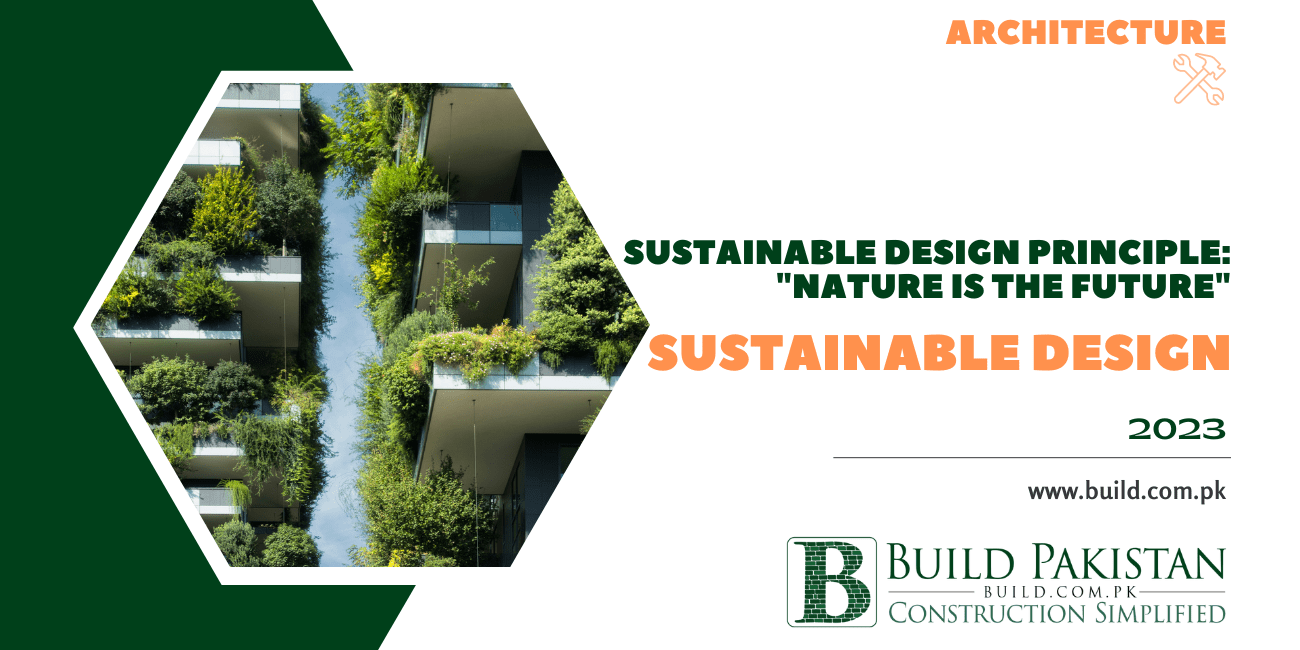Sustainable design principle: "Nature is the Future"

Sustainable design principle: "Nature is the Future"
According to recent statistics, about 56% of the world's
population already resides in cities, and that percentage is only anticipated
to rise in the years to come. The vast metropolitan regions that we now call
home are rapidly growing and encroaching on natural environments. The entire
earth's environment might disintegrate if our cities keep growing at this rate.
We are fortunate to live in a contemporary age with practically everything having modern answers. In order to help conserve wildlife in urban settings, scientists and engineers have created and are continually perfecting the idea of sustainable design.
We anticipate that cities in the future will be more
sophisticated and will have sustainable infrastructures. Perhaps it appears
that we have only just begun to look at all the options that could help us live
better lives and cohabit harmoniously with nature. Let's now explain the
fundamental principles of sustainable design and some of its distinguishing
characteristics.

UNDERSTANDING GREEN ARCHITECTURE AND SUSTAINABLE DESIGN
In cities all across the world, sustainable design is
gradually becoming popular. Buildings and other urban constructions that have
little to no influence on the environment are constructed using this method.
Such structures and amenities are designed with eco-friendly architecture,
which naturally encourages wellbeing and a sense of connection to nature among
the users.
The following are some of the crucial elements of sustainable design and green architecture:
- Robust ventilation systems that maintain comfortable interior temperatures to lower a building's energy requirements.
- Energy-efficient electric devices and gadgets that use clean
energy sources
- Arrangements required for rainwater collection and water saving.
- Non-toxic materials are used for both the inside and
exterior, which has less negative impact on the environment.
IMPORTANT BENEFITS OF NATURE-FRIENDLY ARCHITECTURE AND SUBTLE DESIGN

In order to preserve the natural landscapes and plants
surrounding them, heavily crowded metropolitan regions are increasingly
resorting to sustainable building. Environmentalists believe that eco-friendly
urban development is the most dependable and practical way to prevent the
collapse of the earth's ecology. Let's look at the most important advantages of
sustainable design that have attracted everyone's attention right now.
ECOLOGICAL PROTECTION
Sustainable development principles are used into construction
projects to drastically reduce their environmental effect. The regional
ecosystems and biodiversity are preserved because to the lower CO2 emissions.
Among the many other environmentally friendly building
materials that are becoming more and more popular with architects and builders
today are bamboo, repurposed steel, and wood. You may maximise the advantages
of sustainable architecture by using these materials.
Urban vegetation would also be a component of a perfect
eco-friendly design. A construction site's surroundings can be planted with
trees in addition to using sustainable building materials. Such actions
naturally lessen a certain development's carbon impact.
CONSERVATION OF ENERGY
One of the fundamental ideas behind the notion of energy
conservation is to limit energy use and minimise waste. Projects with
environmentally friendly design and architecture are outfitted with alternative
energy sources, centralised water filtration, and heating distribution systems
to promote the idea of energy saving.
They utilise renewable resources and have energy-efficient
electrical systems. An urban development's power usage can be reduced in areas
with abundant wind and solar energy, which would improve affordability and
benefit the surrounding environment.
IMPROVED WELL-BEING AND HEALTH
You would naturally feel good about an ecologically friendly
layout when it is all around you. The ability of sustainable design to improve
tenants' health and well-being is one of its main advantages. Urban vegetation
would naturally purify the air, lowering the amount of toxins and pollutants in
the air.
You could feel more relaxed after breathing some clean, fresh
air. Additionally, eco-friendly construction encourages open areas or terraces
with lovely horticultural elements that could inspire you to appreciate nature
and lead a more active lifestyle.
CO-LIVING AND SUSTAINABLE ARCHITECTURE: HOW THEY ARE LINKED

In Pakistan as well as other parts of the world, the trend of
co-living spaces essentially encourages the idea of sharing resources, which
results in more people relying on fewer resources. It genuinely benefits the
environment and fully embodies the ideas of sustainable development and
eco-friendly architecture.
Typically, co-living spaces have more open floor plans and fewer
structural barriers. They are the ideal method to utilise urban space,
especially in sizable metropolitan areas with a growing global population.
Co-living spaces not only demonstrate environmental responsibility, but also
foster a sense of safety and communal living via their design and planning.









